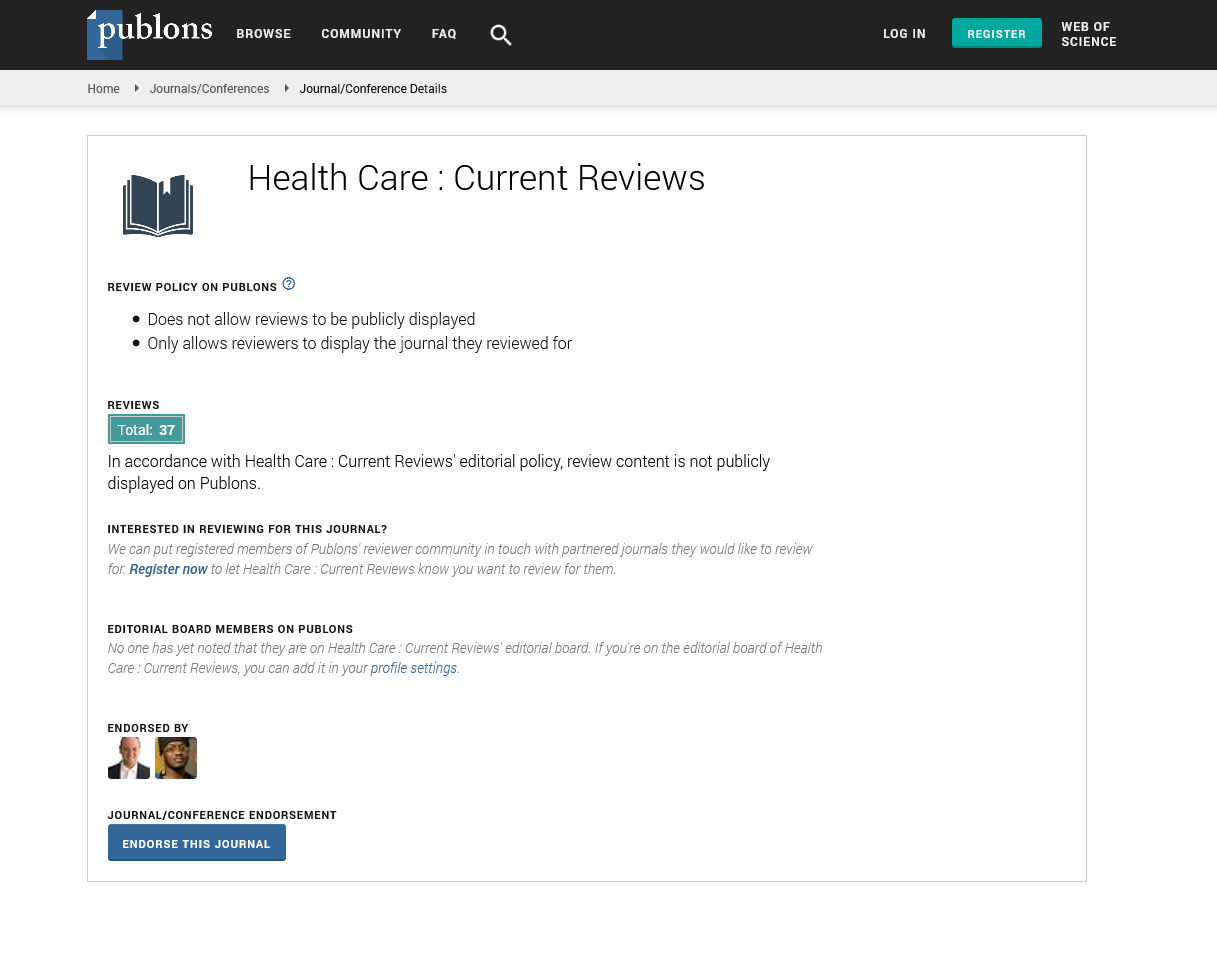Indexed In
- Open J Gate
- Academic Keys
- RefSeek
- Hamdard University
- EBSCO A-Z
- Publons
- Geneva Foundation for Medical Education and Research
- Google Scholar
Useful Links
Share This Page
Journal Flyer

Open Access Journals
- Agri and Aquaculture
- Biochemistry
- Bioinformatics & Systems Biology
- Business & Management
- Chemistry
- Clinical Sciences
- Engineering
- Food & Nutrition
- General Science
- Genetics & Molecular Biology
- Immunology & Microbiology
- Medical Sciences
- Neuroscience & Psychology
- Nursing & Health Care
- Pharmaceutical Sciences
Perspective - (2022) Volume 10, Issue 10
Health Care Utilization and Mortality in Regional Variation
Jillian Rose*Received: 03-Oct-2022, Manuscript No. HCCR-22-18639; Editor assigned: 06-Oct-2022, Pre QC No. HCCR-22-18639(PQ); Reviewed: 20-Oct-2022, QC No. HCCR-22-18639; Revised: 27-Oct-2022, Manuscript No. HCCR-22-18639(R); Published: 04-Nov-2022, DOI: 10.35248/2375-4273.22.10.320
Description
As disparities are frequently not reflected in health outcomes geographic diversity in health care usage has generated concerns about potential inefficiencies in the health care system. We study regional variance in health care usage using extensive micro data and cross-region migration. According to our findings patient demand makes up the remaining 50% of the utilization differential between high and low usage regions. The remaining 50% is accounted for by geographical characteristics. Concerns about potential inefficiencies in the health care supply have been highlighted due to geographic variance in health care usage and high utilization locations frequently don't provide superior health outcomes, it may be especially worried that some regions are overspending on healthcare.
On the one hand if increased regional supply does not result in better health outcomes, heterogeneity in hospital region effects may point to inefficiently high usage. In this situation, efficiency benefits may result from lowering the use of healthcare in areas with abundant supply. However high supply areas actually have superior health outcomes, it might be more concerned about low utilization areas and the recommended policy response might involve increasing use rates. The phenomenon for regions with sicker people to have more demand for health care, pushing up average use rates, makes it difficult to the relationship between regional utilization and death rate.
Utilization rates and mortality will positively correlate as a result of this type of variable bias. Meanwhile a set of hospital region effects that are effectively free of patient demand determinants result from our empirical technique that takes advantage of interregional movement. To be clear the predicted hospital region effects could be caused by a variety of reasons, including local variations in the availability of healthcare services as well as environmental or societal issues. It anticipate stronger associations between location effects and mortality for illnesses where patients often use more hospital services in the months and years before death if regional variations in the availability of healthcare effect mortality rates for reasons with lower average consumption rates, such as deaths from external causes, these connections should be smaller.
The regional health authorities fund hospitals in accordance with rules established by the federal government. Differences in the utilization of specialist care could be caused by variations in the delivery of primary care. This could limit the potential for supply-driven demand and other moral hazard issues. Payments are made in accordance with diagnosis-specific rates that represent the typical cost of caring for any patient with that particular disease. This means that regardless of the patient's or the hospital's location or the real costs associated with treating the patient, any diagnosis will result in the same hospital. Additionally patients are free to select their own primary care provider at any time this applies to patients who transfer primary care physicians as a result of relocating to another location. On the one hand this results in more variety in primary care physicians among patients on the other hand it concerned that this will make the identifying assumptions less likely to hold for these changes as the choice of primary physician is likely to be endogenous to health.
Citation: Rose J (2022) Health Care Utilization and Mortality in Regional Variation. Health Care Curr Rev. 10:320.
Copyright: © 2022 Rose J. This is an open-access article distributed under the terms of the Creative Commons Attribution License, which permits unrestricted use, distribution, and reproduction in any medium, provided the original author and source are credited.

